
Fitness of the Spheres
Learning from the Laws of Harmony

Fitness of the Spheres
Learning from the Laws of Harmony
therefore
The Cosmic
Harmony Laws
of Nature

structure
the Process
of Cosmic Thinking

Population Health Research Institute of the
McMaster University Ontario, Canada

Between 2003 and 2016, a large-scale international study was conducted on the main risk factors for a heart attack.
The study involved 30,000 people from 52 countries, men and women from all regions, races and major cultures of the world.
The study was conducted by 411 medical scientists at 262 medical facilities – hospitals, research facilities and laboratories – and coordinated by the Population Health Research Institute of McMaster University Ontario, Canada.
It is the largest study in this sector to date and was conducted under the direction of the
The data of 27,098 persons – 12,461 heart attack patients and 14,637 persons in the control group – were suitable for scientific evaluation.
Even today, new scientific findings for medicine are continuously obtained from their huge data pool with the help of special analyses.
Here is the link to the pdf format of the special study on STRESS.
Here is the link to the special study on STRESS on the website.
The first publication of the scientific study took place in the worldwide respected medical journal “The Lancet”.
The special analysis of STRESS was published by the American Heart Association’s medical journal “Circulation”.
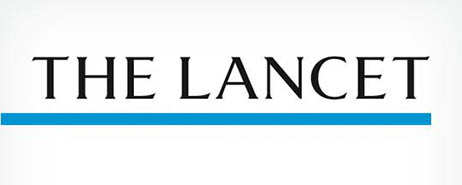 |
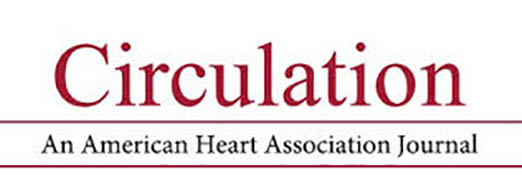 |
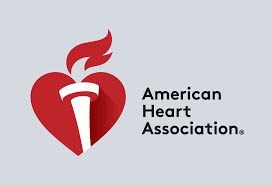 |
| Distribution of study population | ||
| Persons with myocardial infarction (12.461) |
Controls (n=14.637) |
|
| Western Europe | 664 | 767 |
| Central and Eastern Europe | 1727 | 1927 |
| Middle East | 1639 | 1786 |
| Africa | 578 | 789 |
| South Asia | 1732 | 2204 |
| China Hong Kong |
3030 | 3056 |
| Southeast Asia Japan |
969 | 1199 |
| Australia New Zealand |
589 | 681 |
| South America Mexico |
1237 | 1888 |
| North America | 296 | 340 |
| Distribution of ethnic origin | ||
| Persons with myocardial infarction (12.461) |
Controls (n=14.637) |
|
| Europeans | 3314 | 3710 |
| Chinese | 3130 | 3167 |
| South Asian | 2171 | 2573 |
| other Asian | 871 | 1073 |
| Arab | 1306 | 1479 |
| Latin American | 1141 | 1834 |
| Black African | 157 | 369 |
| Coloured African | 311 | 339 |
| Other | 60 | 93 |
Participating countries by geographical region
Western Europe Germany, Greece, Italy, Netherlands, Portugal, Sweden, Spain, United Kingdom, Central and Eastern Europe Chec Republic, Croatia, Hungary, Poland, Russia, Middle East Bahrain, Egypt, Iran, Israel, Kuwait, Oman, United Arab Emirates, Africa Benin, Botswana, Cameroun, Kenia, Mosambique, Nigeria, Seychelles, Zimbabwe, South Africa, South Asia Bangladesh, India, Nepal, Pakistan, Sri Lanka, China and Hong Kong, Southeast Asia and Japan Australia and New Zealand, North America Canada, USA, South America and Mexico Argentina, Brasil, Chile, Guatemala, Colombia, Mexico
Sources of Funding
The INTERHEART study is funded by the Canadian Institutes of Health Research; by the Heart and Stroke Foundation of Ontario; by the International Clinical Epidemiology Network; through unrestricted grants from AstraZeneca, Novartis, Hoechst Marion Roussel (now Aventis), Knoll Pharmaceuticals (now Abbott), Bristol Myers Squibb, King Pharma, and Sanofi-Synthelabo; and through various national bodies from different participating countries.
The participating countries and their national coordinators and medical scientists who carried out the INTERHEART study in the individual countries:
* = National Coordinator
Egypt: M. S. Khedr*, M. G. Abdel-Aziz, S. Abdel-Kader, M. A. Abdel-Moneim, F. El-Demerdash, A. El-Saiid, S. Gharib, M. Hassanin, F. Abdel-Hamid Maklady, I. Sadek; Argentina: R. Diaz*, E. Paolasso*, M. Ciruzzi*, R. Nordaby, C. H. Sosa, H. L. Luciardi, E. M. Marzetti, J. A. Piasentin, M. Amuchastegui, C. Cuneo, G. Zapata, J. O. Bono, E. M. Marxetti, A. Caccavo, R. A. A. Guerrero, R. Nordaby, C. Dizeo; Australia and New Zealand: D. Hunt*, J. Varigos*, M. Sallaberger, G. Aroney, P. Hicks, D. Campbell, J. Amerena, W. Walsh, G. Nelson, D. Careless, J. Durech, K. Gunawardane, A. Thomson, D. Owensby, A. Buncle, B. Watson, H. Ikram, M. Audeau, M. Hills, D. Rosen, J. Rankin, A. Tunesi, J. Sampson, K. Roberts, A. Hamer, L. Roberts, B. Singh, C. Singh, R. Hendriks, G. Tulloch, A. Hill, D. Rees, C. Hall; Bahrain: M. A. Halim*, M. I. Amin; Bangladesch: S. Haque*, G. M. Faruque, M. Hossain; Botswana C. Onen*; Brasilia: A. Avezum*, L. Piegas*, G. Reis, J. P. Esteves, L. C. Bodanese, A. R. Junior, J. A. M. Neto, R. F. Ramos, E. S. Silva, A. Labrunie, A. C. C. Carvalho, I. P. Filho, D. C. D. Albuquerque, J. A. M. Abrantes, O. C. E. Gebara, P. E. Leaes, S. S. Xavier, R. L. Marino, O. Dutra; Chile: F. Lanas*, D. Standen, A. Lanas, C. Santibanez, P. Soto, S. Potthoff, R. Soto, E. Mercadal; China: L. S. Liu*,L. X. Jiang*, Q. Chen, N. Sun, J. Wang, L. Zhang, X. Li, H. Chen, Z. Li, Y. Shi, J. Meng, D. Wang, Z. Liu, J. Yan, W. Zhang, Z. Wan, Y. Xu, X. Li, L. Wang, Q. Fu, K. Zhu, Y. Wang, X. Wang, F. Wang, R. Liu, R. Zhao, K. Sun, S. Yue, Y. Zhang, X. Zhao, L. Zhao, C. Zhou, X. Meng, A. Liu, X. Li, R. Wu, R. Xiao, X. Zhang, G. Wan, X. Chen, Z. Ge, T. Zhou, Y. Li, X. Zhou, F. Zhang; Germany: H. J. Rupprecht*, T. Wittlinger*, P. Schuster, A. Schmidt, H. R. Ochs; Greece: N. Karatzas*, A. Pipilis*, D. Symeonides, K. Karidis, T. H. Tsaknakis, K. Kyfnidis; Guatemala: M. Luna*, A. M. Arroyo, G. Sotomora, M. A. Rodas, L. Velasquez, A. Ovando; Hong Kong: J. Sanderson*, W. Y. Ma, S. Chan; India: P. Pais*, K. S. Reddy*, P. P. Joshi, D. Prabhakaran, D. Xavier, A. Roy, L. Ramakrishnan; Iran: M. R. M. Hasani*, S. H. Mirkhani*; Israel: D. Halon*, B. Lewis*; Italy: M. G. Franzosi*, G. Tognoni*, E. Gardinale, M. Villella, M. Mennuni, F. Saiu, G. Pettinati, S. Ciricugno, S. Antonaci, L. Carrieri, E. Balli, D. Bicego, M. G. DelleDonne, A. Ottaviano, L. Moretti, C. Melloni, G. Melandri, E. Carbonieri, A. Vetrano; Japan: M. Hori*, H. Sato, K. Fujii; Cameroon: W. Muna*, K. N. Blackett*; Canada: K. Teo*, S. Yusuf*, S. Ounpuu, Y. K. Chan, C. Joyner, A. D. Kitching, A. Morris, A. Panju, H. Lee, I. Bata, B. May, J. G. Hiscock, P. V. Greenwood,W. Tymchak, M. Natarajan; Qatar: A. A. Gehani*, H. A. Hajar*, M. M. Almowla, A. A. Omer; Kenia: E. N. Ogola*, P. Wangai; Columbia: L. E. Bautista*, J. P. Casas, C. A. Morillo, E. Ardilla, I. A. Arenas, M. Lindarte, D. Aristizabal; Croatia: Z. Rumboldt*, M. Rumboldt, V. Carevic; Kuwait: M. Zubaid*, W. Rashed; Malaysia: C. C. Lang*, W. A. W. Ahmad, A. Kadirvelu, R. Zambahari; Mexico: M. A. Ramos-Corrales*; Mosambik: A. Damasceno*; Nepal: M. R. Pandey*, G. Baniya, A. Sayami, M. Kiratee, B. Rawat, M. Pandey, J. Gurung; Netherlands: R. Peters*, D. C. G. Basart, P. N. A. Bronzwaer, J. A. Heijmeriks, H. R. Michels, G. M. A. Pop; Nigeria: K. K. Akinroye*; Pakistan: K. Kazmi*, N. A. Memon, S. K. Memon, S. Nishtar, A. Badar, M. A. Mattu, M. Yakub, K. Soomra, J. Khatri, A. M. A. Faruqui, S. I. Rasool, A. Samad; Philippines: A.L. Dans*, F. Q. Punzalan, M. V. C. Villarruz, B. T. Mendoza, C. S. Recto III, B. R. Tamesis, V. Mendoza, D. J. Torres, D. D. Morales, I. Ongtengco; Poland: A. Budaj*, L. Ceremuzynski*, S. Stec, J. Gorny, K. Prochniewska, T. K. Urbanek, P. Wojewoda, M. Pawlowski, K. Religa, R. Klabisz, H. Latocha, M. Szpajer, K. Cymerman, M. Laniec, H. Danielewicz, M. Ogorek, D. Kopcik, A. Baranowska, A. Kozlowski, M. Blachowicz, A. Jedrzejowski, T. Waszyrowski, Z. Zielinski, K. Janik, M. Tomzynski, M. Mytnik, A. Maziarz, G. Rembelska, M. Piepiorka, K. Debkowska, T. Krynski, B. S. Szczeklik, W. Krasowski, M. Rozwodowska, P. Miekus, J. Surwilo, S. Malinowski, J. Hybel, M. Michalak, P. Achremczyk, J. Majchrzak, W. S. Korombel, M. Dobrowolski, J. Gessek; Portugal: J. Morais*; Republic Benin: H. Agboton*; Russia: E. G. Volkova*, S. U. Levashov, O. M. Filatova, U. I. Evchenko, G. S. Malkiman, N. N. Karaulovskaya; Sweden: A. Rosengren*; Seychelles: J. Panovsky*; Simbabwe: J. Chifamba*, A. J. G. Hakim; Singapore: B. A. Johan*, A. Cheng, K. S. Ng, Y. L. Lim, K. H. Neoh, K. S. Tan, L. N. Lum, Y. Cheah; Spain: V. Valentin*, J. Ferriz, A. Rovira, A. Rodriguez-Llorian, E. Cereijo, T. Monzo, N. Alonso, E. Gomez-Martinez, A. Lopez-Perez; Sri Lanka: S. Mendis*, T. Jayalath; South Africa: P. Commerford*, K. Steyn*, B. Brown, F. Martiz, P. Raubenheimer, A. Aboo, J. D. Marx, E. Batiste, K. Sliwa, P. Sareli, C. Zambiakides; Sultanate of Oman: A. T. A. Hinai*, M. O. Hassan; Czech Republic: P. Widimsky*, M. Branny, P. Gregor; Thailand: C. Sitthi-Amorn*, S. Chaithiraphan, K. Bhuripanyo, S. Srimahachota, M. Anukulwutipong, P. Loothavorn, P. Sritara, S. Tanomsup, J. Tantitham, P. Tatsanavivat, T. Yipinsoi, W. Jintapakorn, W. Puavilai, B. Koanantakul, P. Kasemsuwan, C. Supanantareauk, C. Peamsomboon, B. Saejueng, K. Jeamsomboon, A. Sukontasup; United Kingdom: K. Fox*, M. Flather*; Hungary: M. Keltai*, F. Szaboki, P. Karpati, K. Toth, S. Timar, E. Kalo, A. Janosi, M. Rusznak, D. Lehoczky, J. Tarjan, E. Kiss, E. Sitkei, P. Valyi, I. Edes; USA: J. Probstfield*, R. Freeman, J. Mathew, M. Schweiger, W. Johnson, E. Ofili; United Arab Emirates: W. Almahmeed*, L. O. Abdelwareth, A. Bokhari, N. S. Rao, S. Bakir, A. M. Yusufali, E. Hatou, Q. Zaidi.
Heart Attack Probability Ratios
The INTERHEART study determined the heart attack probability ratios of various risk factors.
The heart attack probability ratio indicates how many times more likely it is to have a heart attack under the influence of a risk factor than without this risk factor.
The following 12 main risk factors were examined:
The measurements led to the following results, whereby the risk factors are listed according to the level of the heart attack probability ratios and represent the mean value calculated from all the data collected for all the men and women examined:
| 1. | very strongly disturbed lipid profile (that means: with a very strongly disturbed lipid profile it is 3.25 times more likely to get a heart attack than with a healthy lipid profile) |
3,25 |
| 2. | anger/emotional excitement (= emotional stress) during simultaneous physical exertion |
3,05 |
| 3. | smoking | 2,87 |
| 4. | psychosocial factors (mean value of all stress factors determined: emotional stress, stress at home, stress at work, financial stress, life events) |
2,60 |
| 5. | anger/emotional excitement (=emotional stress) without simultaneous physical exertion |
2,44 |
| 6. | severely disturbed lipid profile | 2,41 |
| 7. | diabetes mellitus | 2,37 |
| 8. | physical exertion without simultaneous emotional stress |
2,31 |
| 9. | high blood pressure | 1,91 |
| 10. | moderately disturbed lipid profile | 1,84 |
| 11. | overweight | 1,62 |
| 12. | slightly disturbed lipid profile | 1,42 |
Risk factor STRESS (mean value of all STRESS factors) – men and women separately:
| Risk factor STRESS in women | Risk factor STRESS in men | |||
| average | 3,49 | average | 2,58 | |
| lower value | 2,41 | lower value | 2,11 | |
| upper value | 5,04 | upper value | 3,14 | |
The risk factor STRESS is much more dangerous for women than for men – or women it can even quintuple the risk of a heart attack!
The most important findings of the INTERHEART study, as far as they are relevant for fitness clubs:
An even higher risk factor for heart attack than emotional STRESS with simultaneous physical exertion is only a very strongly disturbed lipid profile.
Since very strongly disturbed lipid profiles are rather rare, but anger / emotional upset is almost ubiquitous today, emotional STRESS with simultaneous physical exertion (e.g. during sports and fitness training) in practice becomes the greatest risk factor (!) for a heart attack – in both sexes and in all age groups, regions, races and cultures of the world equally.
The scientific results of the investigation document: If performed under emotional STRESS he fitness training, which the trainees think makes them healthy, turns out to be more harmful for heart and circulation than
INTERHEART study
main finding
for the professional fitness centre
intensive physical training
without targeted resolution
of emotional STRESS
is harmful to health!
It can even be life-threatening!

Prof. Dr. med.
Salim Yusuf
The INTERHEART study was initiated by Prof. S. Yusuf, founder and director of the Population Health Research Institute at McMaster University. The following persons were in the management team:
The INTERHEART study revealed that the risk for a heart attack rises when someone is under emotional STRESS and at the same time is intensely physically active – medical researchers explain this effect in the following way:
Both physical exertion and anger or emotional upset cause activation of the sympathetic nervous system and lead to the release of catecholamines (stress hormones). As a result
All this can cause already sensitive and easily vulnerable inclusions of fat deposits in the blood vessel walls to break open, the deposits flow into the bloodstream, clog it and thus cause a heart attack.
Since intense physical exertion and emotional STRESS have a similar effect on the organism, it is not surprising that these effects add up in part when they occur simultaneously.
What can you do to prevent such damage to the health of your members and thus rule out the possibility of high compensation claims in many cases from the outset?
Important is to resolve emotional STRESS in a natural way before and during training: in the only place where this is possible: where it arises: directly in the area of emotions.
Today this is scientifically possible with the help of the Medical Resonance Therapy Music® in Dynamic Space Stereophony® and the harmony laws of nature applied in it:
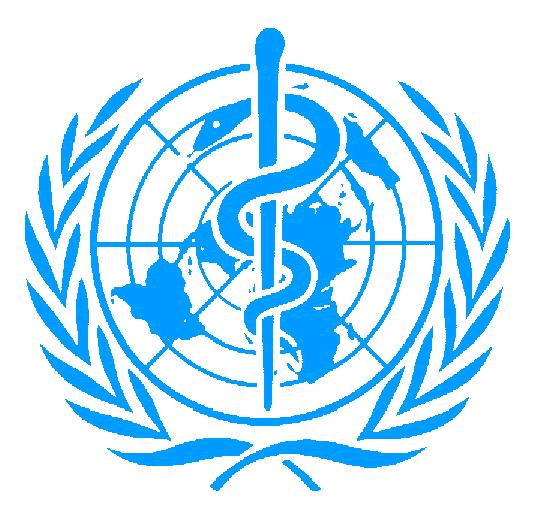
WHO
World Health Organization
At the World Health Organization’s (WHO) World Conference “Society, STRESS and Health” at the Russian Academy of Sciences in Moscow, the digital music preparations of the Medical Resonance Therapy Music® – based on more than 50 years of musicological-mathematical and more than 30 years of medical research and development – were acknowledged as the best scientific preparations against STRESS:
Medical investigations with the Medical Resonance Therapy Music® with persons who are under great physical strain and at the same time exposed to great emotional strain
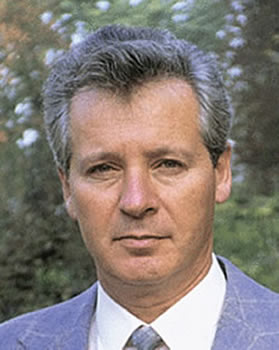
PROF. DR. MED.
ALEXANDER REZNIKOV
member of the Academy of Sciences of Ukraine and the Academy of Sciences of New York. He is one of the most important hormone researchers of the CIS – Commonwealth of Independent States – and has been head of the Laboratory for Neurohormonal Control of Human Reproduction at the famous Research Institute for Neuroendocrinology in Kiev for two decades. Among other things, this institute is a research partner of the World Health Organization (WHO).
“A new kind of medication,
a mathematical, digital pharmaceutical drug
with a powerful effect,
to harmonize psycho-physiological processes.”
Prof. Dr. med. Alexander Reznikov
Right from the first investigations carried out by Prof. Dr. med. Alexander Reznikov – an internationally respected neuroendocrinologist – intensive physical exertion and great emotional strain occurred simultaneously.
Prof. Reznikov had experienced in his own family how his wife dissolved her migraine by listening to the Medical Resonance Therapy Music®. As a scientist, however, he wanted to rule out any placebo effect in his investigations and therefore decided to examine expectant mothers during childbirth. These mothers would be so intensively occupied with their pain, with the great physical exertion of giving birth to a child and with the emotional strain that there would be hardly any room for a placebo effect.
The study examined expectant mothers who showed too weak contractions of the uterus during labor – which threatened to endanger the birth. The research protocol divided the expectant mothers into three groups:
All the women listened to the music using CD players and headphones.
They were asked about their subjective feelings of anxiety and pain; the strength and rhythm of uterine muscle contractions were measured, as well as the release of analgesic hormones and STRESS hormones and the child’s cardiac activity.
The results:
MRT-Music group
The women in the MRT-Music group experienced a soothing reduction of their pain and anxiety through listening to the music – emotional STRESS was subjectively significantly reduced.
The hormone measurements confirmed this: the hormone system calmed down and produced fewer STRESS hormones and pain-relieving hormones.
Although the organism had fewer hormones available to relieve pain, the women now had significantly less pain and not more pain – which one would normally expect.
This could be due to a comprehensive release of pain-producing tensions during labor.
As explained in the INTERHEART study: under STRESS also hormones are released, that can lead to cramps. Apparently, such cramps were reduced by the dissolution of STRESS.
Another very positive result: The strength of the muscle contractions of the uterus increased by 75% in the MRT-Music group and the contractions became more harmonious in rhythm – an extremely welcome result because now the birth of the child was no longer endangered by this problem.
Also the heart activity of the child calmed down to a healthy harmonic value.
So if you are under very high physical and emotional STRESS and listen to Medical Resonance Therapy Music® – as was the case here with mothers during labor and childbirth – both physical STRESS and emotional STRESS are reduced: at the objectively measurable hormone level and thus – important for the fitness world – the risk of a heart attack is also reduced.
Control Group A – Mozart Music Group
The women in this group too reported a significant reduction in their anxiety and pain from listening to the music, and they also experienced a significant change in the release of hormones: however, here the hormone levels increased – in the opposite direction as in the MRT-Music group: the already over-productive hormone system was activated even more, and even more pain-inhibiting and anxiety-relieving substances were produced – which explains the reduced anxiety and pain in this group.
This shows how important it is to know what is happening at the objectively measurable hormonal level, because not the subjective assessment but the hormonal situation can increase or decrease the risk of a heart attack.
Control group B without music
There were no significant changes here, only slight fluctuations.
In the interest of the health of your club members and also in your own interest: Use music in your fitness programs whose positive effects on health can be documented through scientific research and clinical observations.
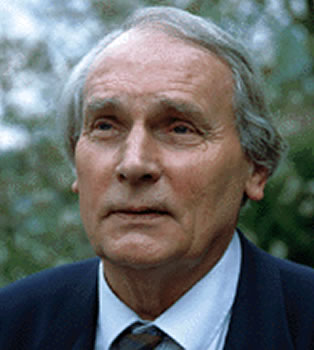
PROF. DR. MED. GUNTHER HILDEBRANDT – professor of medicine at the University of Marburg, Germany and at the same time also an avid classical musician and painter. He is one of the fathers of chrono-medicine and founded the European Society for Chronobiology; at the same time he was for many years Vice-President of the International Society for Chronobiology. At the University of Marburg, he founded the Institute for Rehabilitation Research and was its director until his retirement. Like the famous European physician Paracelsus he directs his scientific interest particularly on the “Inner Physician” – on the innate self-healing powers in the human organism. For him, a therapy is only natural, if it is able to revitalize inner self-healing powers. To the scientifically oriented naturopathic physicians around the world, he is a highly respected authority in the field of natural medicine.
Prof. Dr. med. Gunther Hildebrandt is one of the fathers of chronobiology and chronomedicine.
In his work “Chronobiological Aspects of Music Physiology” he calls the human organism a “music physiology”: because it is fundamentally “harmonically” ordered: that is, it follows the same principles of nature that also in the microcosm of music – in the inner world of sound – order the interaction of the innumerable vibrations.
If this harmonic order of the organism is disturbed over a longer period of time, this will inevitably lead to health disorders.
Like no other sensory organ, our ear is connected to our emotions through our brain, and again like no other organ, it is also connected to our muscle system.
Since the organ of equilibrium is also located in the ear, it is connected to every muscle in our body.
The ear, nose and throat specialist Prof. Dr. med. Tomatis speaks here of a cybernetic control loop: the brain sends the order to a muscle for activity, the muscle carries out the activity and sends feedback to the organ of equilibrium in the ear. The latter carries out an analysis and, if necessary, gives correction instructions to the brain, which then passes them on to the muscle.
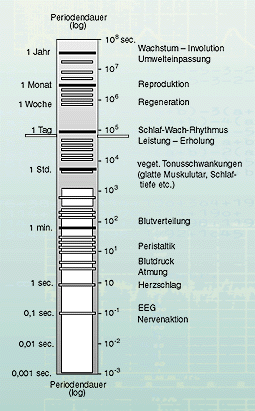 Through this close connection of our sense of hearing to the emotional world and the muscle system, music has a great influence on both: if music follows the harmony laws of nature, the emotional world and the muscle system are ordered harmoniously in a natural way. If the order of a music violates the harmony laws of nature, then it contributes to disturbing the natural inner harmony and our emotional world and our physiology get under tension and finally under strain and STRESS: in practice – as the INTERHEART study drastically documents – the main risk factor for a heart attack.
Through this close connection of our sense of hearing to the emotional world and the muscle system, music has a great influence on both: if music follows the harmony laws of nature, the emotional world and the muscle system are ordered harmoniously in a natural way. If the order of a music violates the harmony laws of nature, then it contributes to disturbing the natural inner harmony and our emotional world and our physiology get under tension and finally under strain and STRESS: in practice – as the INTERHEART study drastically documents – the main risk factor for a heart attack.
If you want to avoid this as much as possible, you should take serious care that only music is used in the fitness center that is proven to dissolve STRESS and strengthen health.
The fitness program of the future integrates body, mind and soul – on a scientific basis
Many fitness centers also offer physical cardio health training, for example, with the aim of strengthening various parameters of the heart and circulation such as blood pressure, pulse, heart rate, etc.
Here, too, an integration with a mathematical-music-scientific regeneration program makes sense, which comprehensively regenerates the heart and circulation parameters from the inside: with the help of the Medical Resonance Therapy Music® and the harmony laws applied in it: lowers too high blood pressure, raises too low blood pressure, harmonizes heart rate, pulse and arterial pressure, and thus leads back to the standard age values.
See the scientific studies and clinical observations on our website.
A combination of the musicological-mathematical programs of the Medical Resonance Therapy Music® with physical fitness programs makes sense in the following indications, in which the Medical Resonance Therapy Music® achieves measurable positive results:
Furthermore:
Physical fitness training without subsequent scientifically effective strengthening the regeneration is incomplete and runs the risk of wearing the body out more than benifitting it.
Here, too, the application of the harmony laws of nature with the help of the Medical Resonance Therapy Music® is the scientific means of choice: about 100 scientific studies and clinical observations in 20 medical indications document: no other scientific procedure is able to stimulate the natural regeneration of human life systems and self-healing powers as comprehensively, quickly, highly effectively, simply, pleasantly and objectively as the Medical Resonance Therapy Music® with its scientific application and artistic utilization of the harmony laws of nature.
Influence of Medical Resonance Therapy Music® on Emotional Fitness
The psychological investigations and clinical observations with the Medical Resonance Therapy Music® document a clear decrease of emotionally negative states:
The psychological investigations and clinical observations with the Medical Resonance Therapy Music® also document a clear increase in emotionally positive states:
These effects, too, occur without harmful side effects and without making the listener dependent on them.
Influence of Medical Resonance Therapy Music® on Mental Fitness
On the mental level, the investigations and clinical observations with the Medical Resonance Therapy Music® document a strengthening of cognitive performance:
Influence of Medical Resonance Therapy Music® on Physical Fitness
The scientific music preparations of the Medical Resonance Therapy Music® represent the best known means today for stimulating and strengthening the self-healing powers and natural regeneration – as proven by many scientific studies and clinical observations:
documented by the fact,
Act before it is too late
When in February 2019 an 18-year-old girl died of heart failure during a military fitness test conducted by the United States Navy, and a little later a 20-year-old girl, the safety procedures for such tests were reviewed. A memo to the sailors says:
“No one should risk their life by going through a military fitness program that is life-threatening for them. ........ it is important that every Navy sailor knows the risk factors for training-related death and the strategies for minimizing these risks.”
Surely also you want to protect your club members as far as possible from the life-threatening dangers which emanate from emotional STRESS during a fitness workout.
With our 30 years of experience in using scientifically proven medical music to dissolve Stress, we can help you choose the music program that is best for you. We draw from a repertoire of many thousands of titles. Please write us an e-mail here – we will then call you back.
The International Philharmony Foundation is a charitable foundation. All proceeds exclusively serve the Foundation's charitable initiatives around the world.